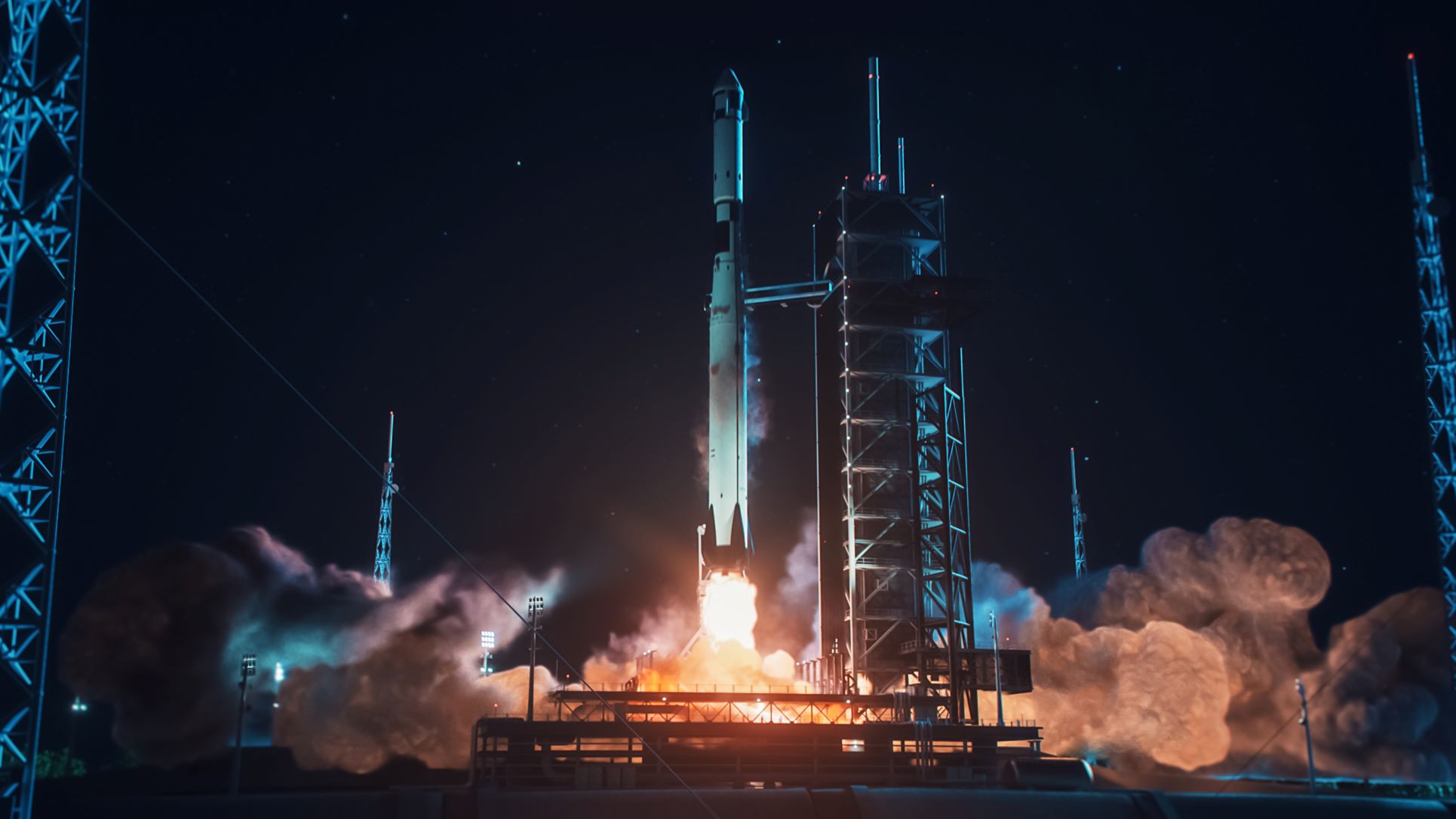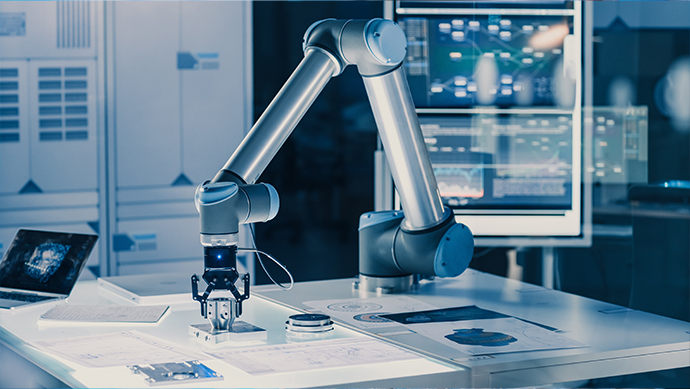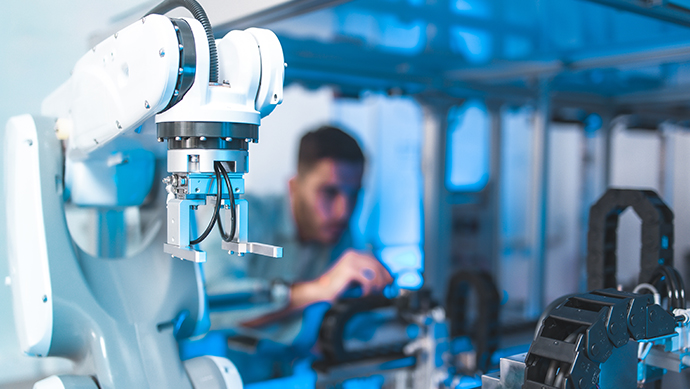Telerobotics in Healthcare: From Space Robotics to the Mobile Lab Robotics of the Future

Presented by: Daniel Leidner, Research Group Leader, DLR German Aerospace Center Institute of Robotics and Mechatronics
Edited by: Ben Norris
The Covid-19 pandemic posed new challenges for healthcare provision, particularly given the imperative need to prevent face-to-face interaction at the height of the pandemic. One of the UK government’s mantras at the time was ‘hands, face, space’; taken most literally, this might suggest a workaround for future peaks or other pandemics further down the line. As Daniel Leidner explained at our Mobile Robotics conference in April 2022, far-out robotics designed and developed for space exploration could have a dual role in abetting healthcare treatment. Telerobotics could provide support in the mitigation of highly contagious pathogens in a remarkably similar way to how they could support the exploration of distant planets.
Telerobotics: Martian Dreaming
Daniel Leidner began his presentation with an image that drew on his experiences as Research Group Leader at the DLR German Aerospace Centre Institute of Robotics and Mechatronics. It depicted concept artwork of a Martian colony, replete with astronauts, vehicles and living spaces. “What do you see here?”, he asked the audience. “Astronauts, habitats, communication devices… how do they get there? Who’s setting it up?” A pause. “Those astronauts are not doing it because they need it to be on the ground when they get there. Otherwise, they will die.”
- Automating CAR-T Cell Production
- Lab Digitalisation: Automation, Transformation, and the Smart Labs of the Future
- Key Trends in Data Digitisation and Productivity Boosting
Having established the hostility of the Martian surface, Leidner then queried who would assume the role of outfitting Mars for habitation. “It would be the robotic assistants on-site to prepare the area for crewed landings,” he explained. “But we would not send them just on their own. That would be rude.” Instead, astronauts would be sent into orbit around Mars to control the robots remotely, but with minimal time delays. “If you want to actually be colonising Mars and building habitats there, you need better telepresence modalities,” continued Leidner. “This is what I’m talking about here.”
Telemanipulation: Remote Control Methods
After outlining the principles of operation, Leidner took the audience through the range of approaches taken by DLR towards remote robotic operation. “You can control a robot directly through haptic feedback,” he said. “If you want to go further and have maybe ten seconds’ delay or so, then you have intuitive interfaces – that’s for orbiting spacecraft which are not permanently in one spot.”
Leidner provided some more information on telemanipulation. “With a tele-operated robot, you can act through the robot as an avatar,” he said. The telerobotics system works with haptic feedback which relays visual information. “With that you can see what the robot sees, and you can interact with the environment through the robot,” explained Leidner. “If the time delay increases, you want to have local models on-site. So you also want to have a smart communication channel that prevents instabilities.”
Leidner cautioned that robots were not yet perfect. “You may encounter a situation where you want to intervene or change something,” he said. “For example, a module is burning, and you want to fix it.” The best approach is to plan a sequence of actions to account for this. Leidner explained that the interface overlay used by astronauts to control the robot provided all actions possible, and worked with action templates which is similar to the representations developed by SiLA, the consortium for Standardization in Lab Automation. “That’s cool, that’s very intuitive,” said Leidner. “What can we do with that on earth?”
From Outer Space to High Biosafety Laboratories
Leidner explained that after the advent of the Covid-19 pandemic his team began to explore another scenario which could benefit from remote assistance through telerobotics: care of the elderly. As Leidner explained: “Elderly care is super important because of the demographic change, so we thought 'okay, why not combine these two methods'?” The result of this fusion looks like science fiction made into science fact. The same technology is also valuable for laboratory automation – one quote that Leidner attributed as his raison d’etre came from Professor Andreas Kurth: “high-biosafety laboratories are like the space station.”
The product of this is a series of interpolations of existing technologies, something referred to by Leidner as ‘laboratory automation by leveraging insights from industrial robots’. “Maybe we can have these robots used in such an environment,” he said. From here he outlined the CoViPa project, which explored ways of dealing with the virological and immunological parameters of SARS-CoV-2. “What is important about this project is the reachout,” explained Leidner. “It’s super important that the experts from robotics get in touch with experts from pharmaceutical engineering, from chemistry, from biology – all the fields that are relevant.”
Telerobotics in Action: Getting the Grippers Dirty
Currently, there are three phases which the KUKA robot championed by Leidner has to go through. Part of the innovation which really adds to the process is the fact that many aspects of the robot’s functionality are interchangeable: tools which suit it for space exploration also function in a laboratory environment. For example, wider grips allow it to interact with centrifuges. “Maybe you want to have a robot servicing a biosafety facility, if you want to exchange an air filter,” explained Leidner.
The first steps for implementing this involve training the robot in a safe environment, planning out a sequence, then applying the device to set tasks. “What we would like to do first is PCR sampling,” added Leidner. “Then if there’s another epidemic case, we can react.” Given that the technology already exists, there appears to be a huge amount of scope for taking telerobotics machinery presently in development and applying it in a healthcare setting. “We have a robotic lab assistant,” Leidner concluded. “And we want to make it failproof so it always works.”
Want to read more about some of the space-age advances currently being pioneered in pharmaceuticals? Head over to our PharmaTec portal for the latest insights from the industry’s best and brightest. If you’d like to register your interest in our upcoming Pharma Data UK: In-Person conference, visit our event website.





.png)

